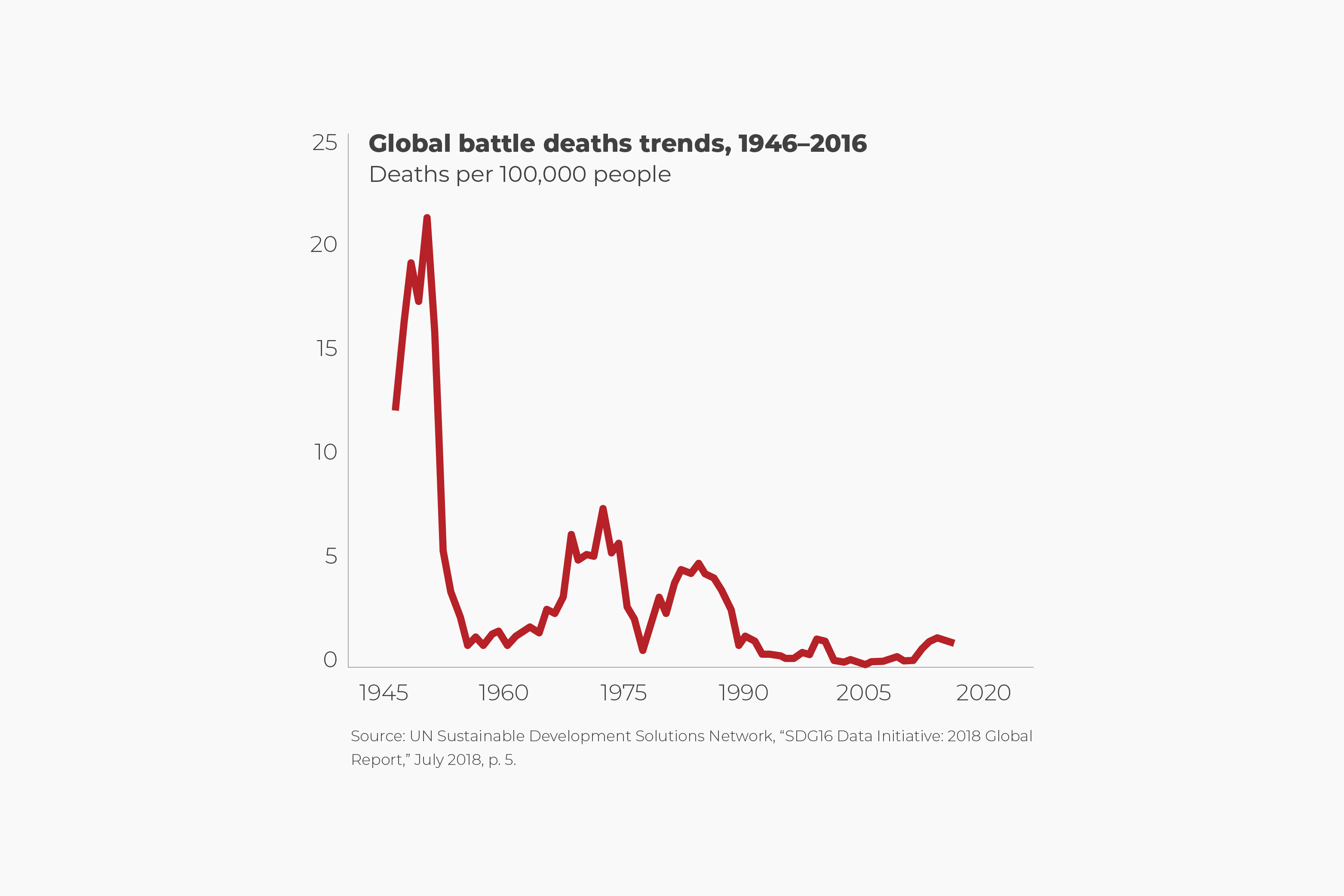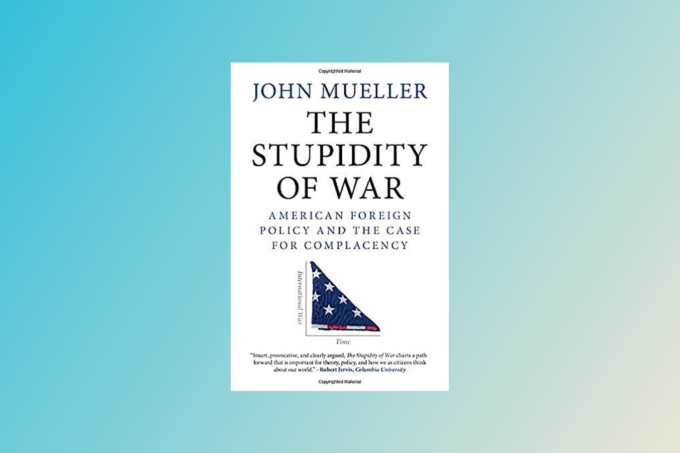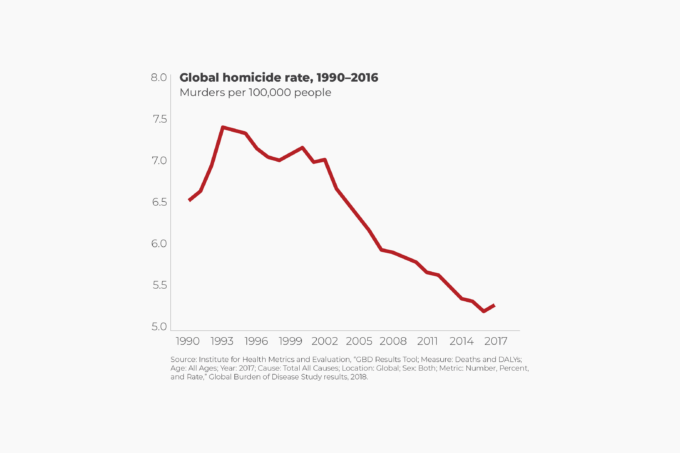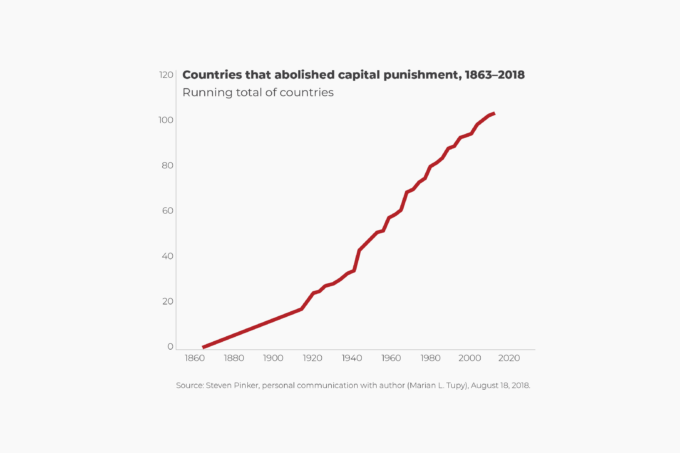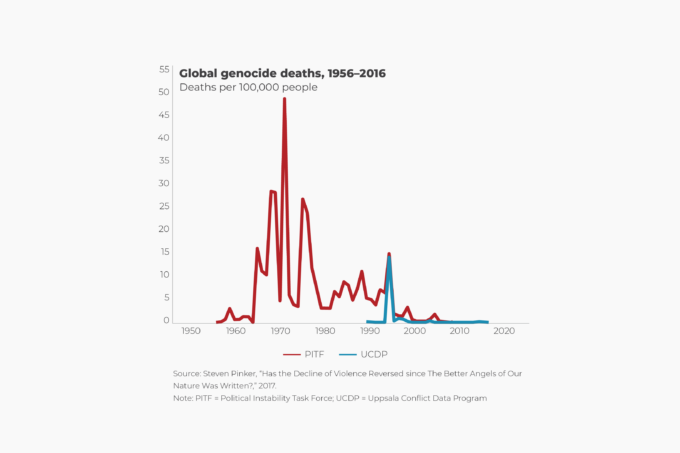Another measure of the general decline in violence is the global battle death rate per 100,000 people. Researchers associated with the Peace Research Institute Oslo and the SDG16 Data Initiative have documented a steep decline in the rate at which soldiers and civilians were killed in combat in the post–World War II era.
The rate of battle deaths per 100,000 people reached a peak of 23 in 1953. By 2016, it had fallen by about 95 percent. The rate of battle deaths rose significantly from a low of about 2 per 100,000 in the late 1950s to approximately 10 per 100,000 in the late 1960s as the Vietnam War heated up.
In a 2018 analysis of interstate war trends, two Norwegian mathematicians associated with the Peace Research Institute suggested that the Vietnam War was when the momentum toward a more peaceful world really took hold. Why? Television. The Vietnam War was the first war in which gruesome images of mangled bodies and obliterated villages and cities were broadcast nightly into millions of homes. Since then, televised war reporting has only become more pervasive.
As the war in Southeast Asia ground on, Americans and their allies became less willing to accept high death tolls from conflicts abroad. Other analysts argue that falling fertility rates mean that parents become more protective of the few children they have. One consequence is that low-fertility societies become increasingly averse to war casualties. It is worth noting that most of the current intrastate wars identified by the Council on Foreign Relations’ Global Conflict Tracker are occurring in high-fertility countries. One happy result of falling global fertility rates might well be a more peaceful world.

